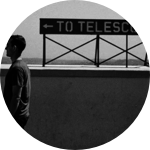About This Project
We seek to expand the user experience researcher's toolbox by introducing real-time emotional arousal as a novel metric. In this study, we will measure galvanic skin response and heart rate during two digital experiences: searching for flights online and playing an online game. Our hypothesis is that neurophysiologic indicators of emotion (galvanic skin response and heart rate) will be correlated with self reports and artificial manipulations of the experience.
Ask the Scientists
Join The DiscussionWhat is the context of this research?
Many people are perfectly comfortable using digital technology. But basic tasks can be challenging for the elderly population and other groups less comfortable with new technology.
This experiment will test whether the quality of a user experience is reflected in emotional markers of frustration, surprise, and happiness. We will compare psychophysiological measures of emotional arousal (EDA, HR) to self reports and artificial manipulation of the experience.
Our tasks will be searching for flights online and playing an online computer game. In order to manipulate good / bad experiences, we will artificially throttle the browser speed.
Updated: 8/5/2015
What is the significance of this project?
Digital technology has transformed our lives and continuously impacts our perception. But large populations continue to avoid the web, mainly because they find it too hard to use. This is unfortunate because it means millions of people are excluded from using the resources available on the Internet.
Additionally, the slow transition to digital systems presents major a overhead cost for organizations continuing to rely on physical paperwork, a burden that ultimately raises the price paid for goods and services by society as a whole.
This project will explore how emotional measures of arousal can be used to understand what is and isn't working in a user experience. This can help technology designers build solutions for populations that are essentially blocked from utilizing the web.
What are the goals of the project?
We plan to measure the emotional arousal of individuals with neurophysiologic sensors while they use different flights search engines and play an online computer game. We will also record typical usability metrics, including time-to-complete, error rate, and satisfaction.
There are two central questions we expect to answer:
1. Do poor user experiences increase user frustration?
2. Do reductions in user frustration improve their ability to confidently complete basic tasks and enjoy online experiences?
Our overarching goal is to develop a novel research methodology which can be reused by user experience researchers and behavioral scientists alike, for any product or use case.
Budget
UPDATE: We still had a long way to go on our first goal of $6,240, and are running out of time. In light of that, we decided to tighten the belt.
Changes:
– Research Assistants will be volunteers
– Jeremy and I are volunteering our time for this (originally there was budget to design and develop the web experiences)
– Participant pool is being cut from 60 to 30
NEW BUDGET:
Participant compensation: $1200 ($40 per participant)
30 participants are needed for this study. Each will come to the Center for Neuroeconomics Studies for a usability study involving basic tasks on prototypical digital interfaces. We will compensate them $40 for their time (roughly 1 hour) and travel costs.
Materials: $120 ($4 per participant)
In addition to compensation, we will use $4 worth of disposable electrodes to collect neurophysiologic data from each participant.
Meet the Team
Team Bio
Several years ago I realized my passion for human behavior. I am captivated by how our actions and decisions are shaped by the things around us – electronic devices, friends, co-workers, architecture, laws, etc.In order to better understand the human factors central to these questions (and contribute research of my own) I am pursuing graduate training in neuroeconomics and behavioral economics. Under the guidance of Dr. Paul J. Zak, I have learned to develop and conduct behavioral studies, grasping the nuances of proper experimental design and detail-oriented rigor of data collection.
Outside of school, I am a artist. Music and drawing are my creative passions, and I'll be dedicating more time to them once I have the diploma in hand.
Project Backers
- 14Backers
- 100%Funded
- $1,320Total Donations
- $94.29Average Donation

